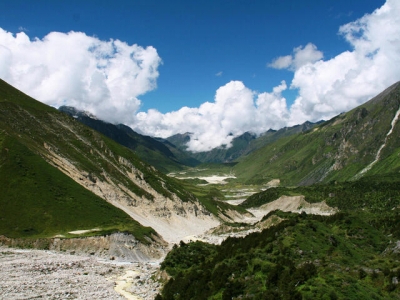
In addition to offering stunning views of snow-clad mountains, the Himalayas is crucial for us humans and wildlife. How? Let’s find out!
One of the youngest mountain ranges on the planet the Himalayas separates the Indian subcontinent from the Tibetan plateau the range covers a very large area spanning countries such as Pakistan, Afghanistan, China, Nepal, and Bhutan, in addition to India. It is home to some of the highest mountains in the world including Mount Everest, the highest peak in the world. The Indian Himalayas runs through several regions, including Jammu and Kashmir. Himachal Pradesh, Uttarakhand, Sikkim, Meghalaya, Nagaland, Arunachal Pradesh, Assam, and West Bengal . The vast size, huge altitude range, and complex topography means the Himalayas experiences a wide range of climate – from humid subtropical to cold, dry desert conditions – that is perfect for rich biodiversity. The flora ranges from grasslands, shrublands, and coniferous forests to broadleaf forests. These great mountains are home to over 300 species of mammals, nearly 1,000 species of birds, and thousands of reptile, amphibian, and fish species. However, the brutal effects of deforestation, poaching, and global warming have not spared the region, where several species are now said to be on the verge of extinction, and many more, endangered.
Birds
Himalayan monal, black-necked Tibetan crane, snow partridge, golden eagle, Himalayan vulture, crested serpent eagle, bearded vulture, Himalayan griffon vulture, brown accentor, robin accentor, Tickell’s leaf warbler, streaked rosefinch, Himalayan quail, Tibetan snowfinch, fork-tailed swift, red-billed chough, Himalayan snowcock, blue whistling thrush, crested kingfisher, Eurasian buzzard, blood pheasant, western tragopan, osprey, green pigeon, snow pigeon, grey nightjar, Asian emerald cuckoo, a variety of terns, geese, ducks, gulls, grebes, falcons, babblers, doves, woodpeckers, parakeets, orioles, drongos, magpies, flowerpeckers, sparrows, wagtails, pipits, snipes, owls, barwings, tits, laughing, thrushes, nuthatches, warblers, and sunbirds.
Animals
Snow leopard, white-bellied musk deer, Himalayan tahr, takin (goat-antelope or gnu goat), Himalayan serow (goat-antelope), Himalayan goral (a bovid species). Himalayan brown bear, the Asian black bear (also known as the moon bear or white-chested bear), red panda, golden langur, the Kashmir grey langur, Himalayan wild yak, Himalayan marmot, Himalayan blue sheep, Himalayan wolf, masked palm civet, yellow-throated marten, Siberian ibex, Tibetan gazelle (or goa), clouded leopard, flying squirrel, red fox, Himalayan weasel, wild dog, sloth bear, and great Tibetan Sheep. Reptiles include common krait, banded krait, Indian spectacled cobra, Indian king cobra, Russell’s viper, Himalayan pit viper. Himalayan cat snake, common vine snake, and common bronze back tree snake.
Did you know?
- The Indian Himalayan region is responsible for providing water to a large part of the country – through rivers that come from the Himalayan glaciers. India has nearly 9,000 glaciers, and there are three major Himalayan rivers – the Ganges, the Brahmaputra, and the Indus. Since Himalayan rivers rise from snow-bound mountains, they are perrennial rivers.
- When global warming became a realistic threat decades ago, it was hoped that India’s glaciers would hold up better than others because they rely on monsoons as opposed to just snowfall. But this appears to have been misguided because ice is melting at an alarming rate, resulting is regular floods across the country.
Picture Credit : Google




